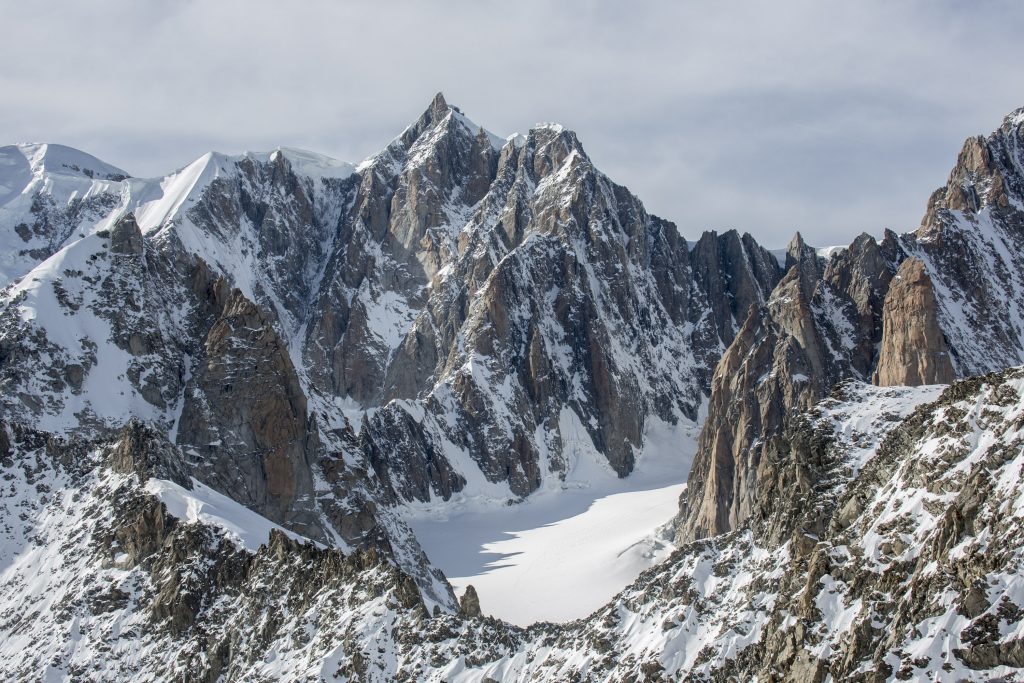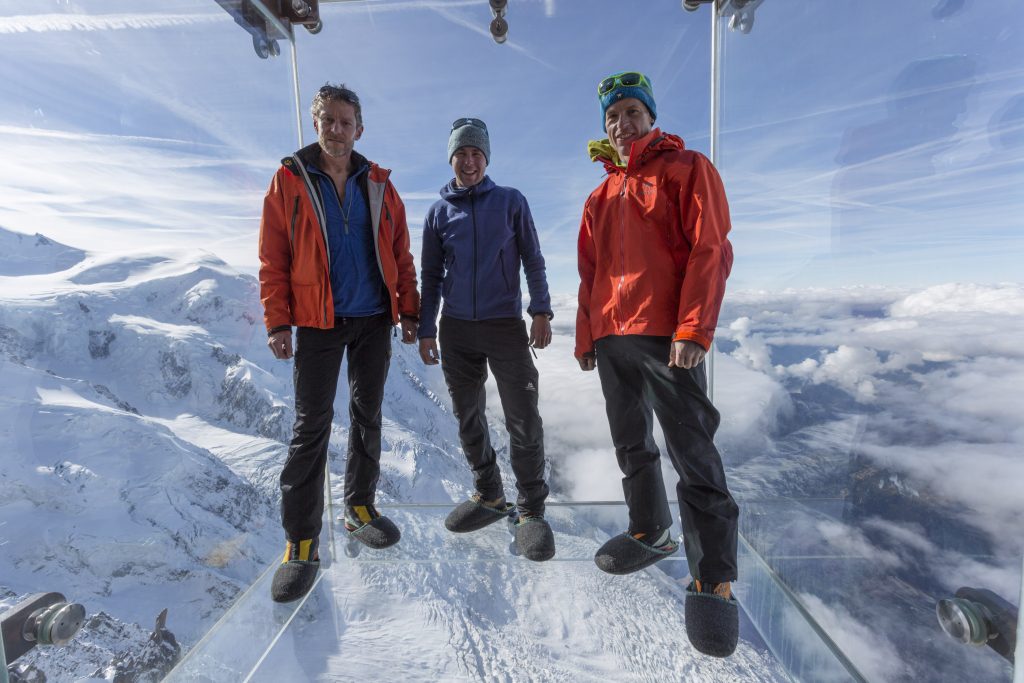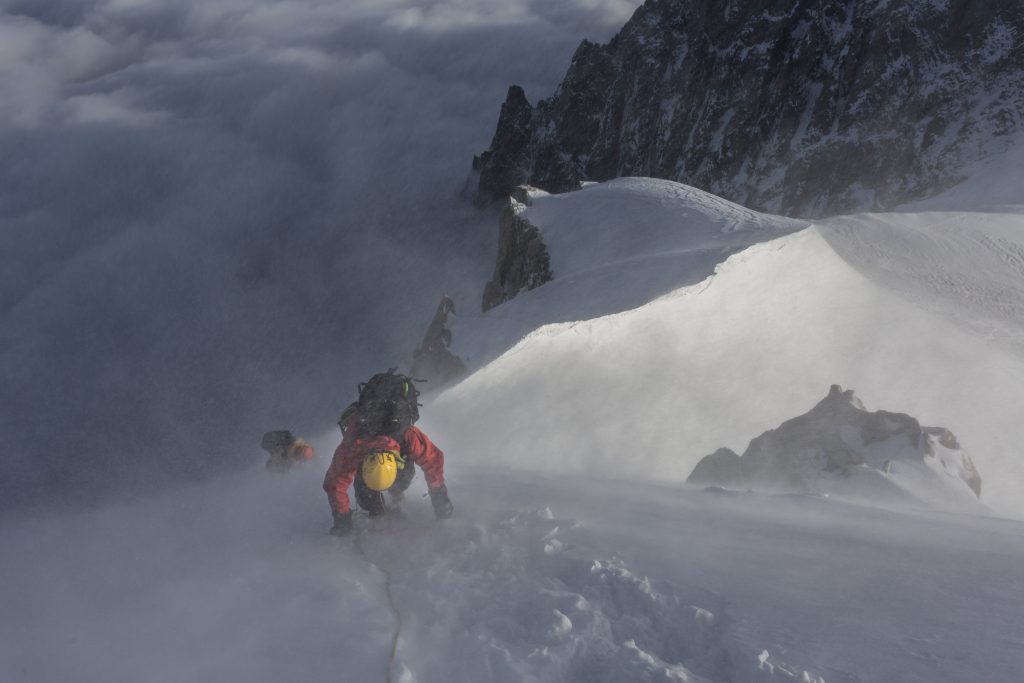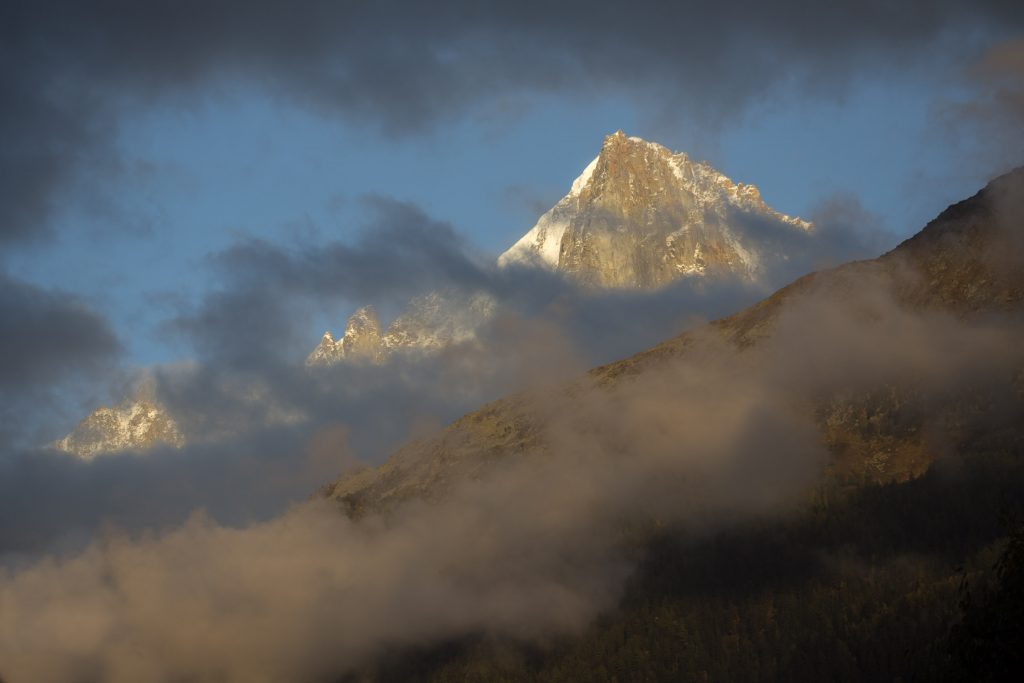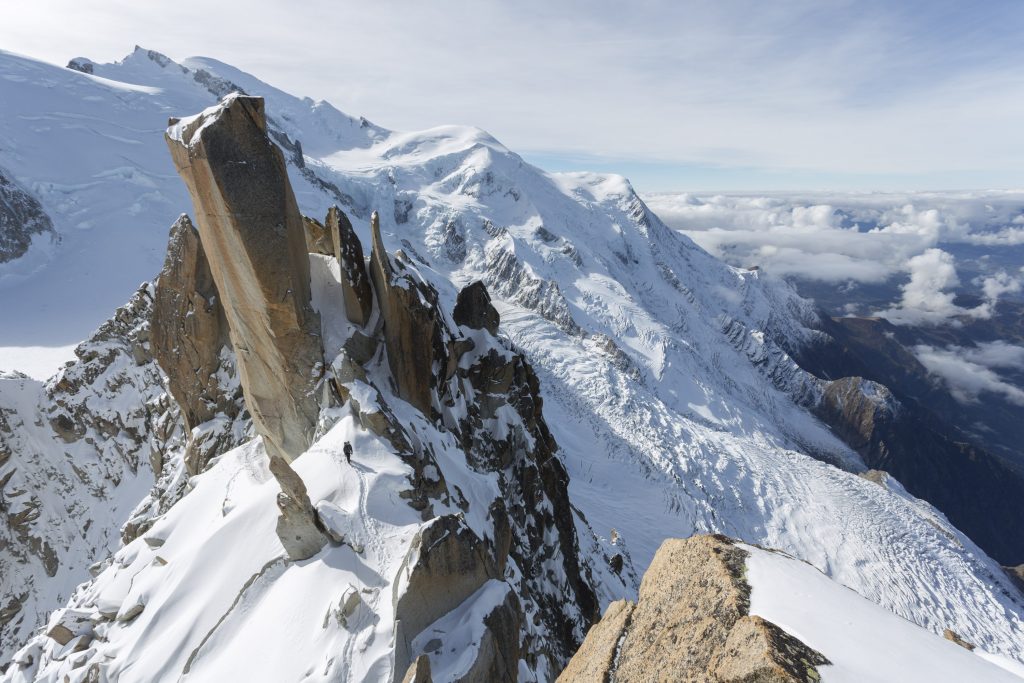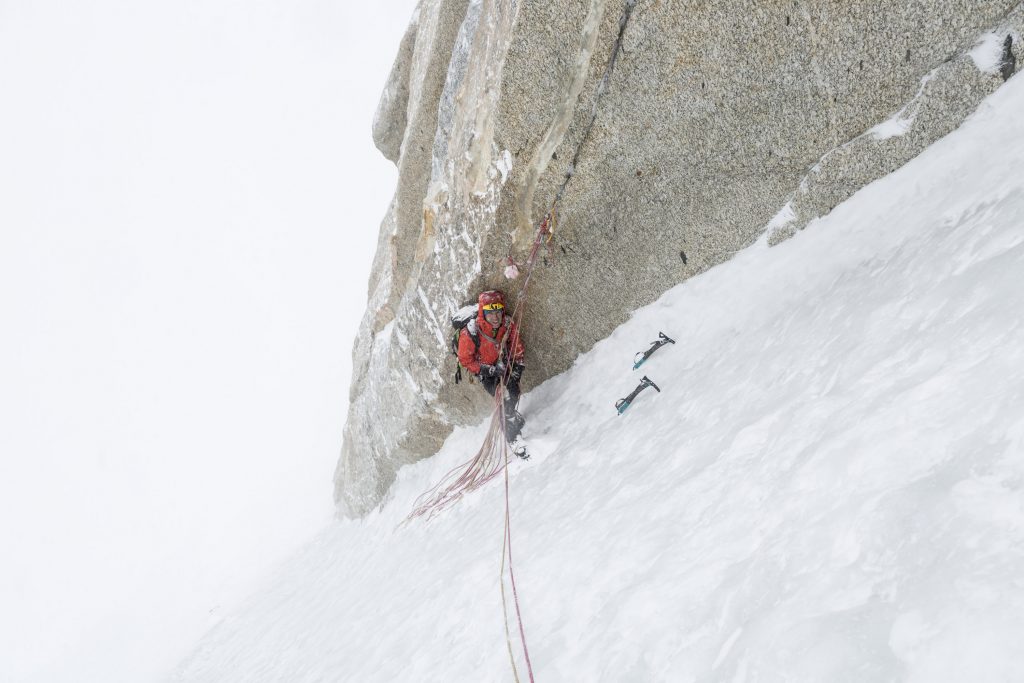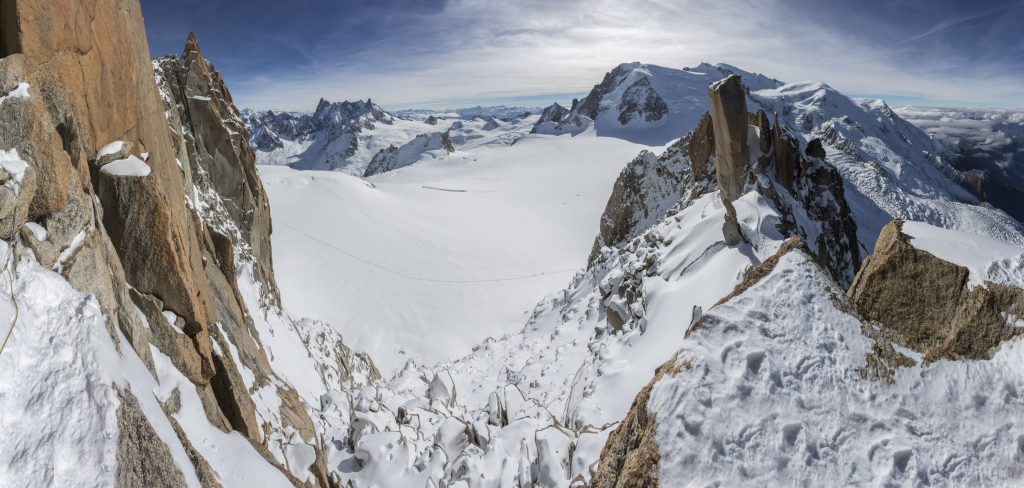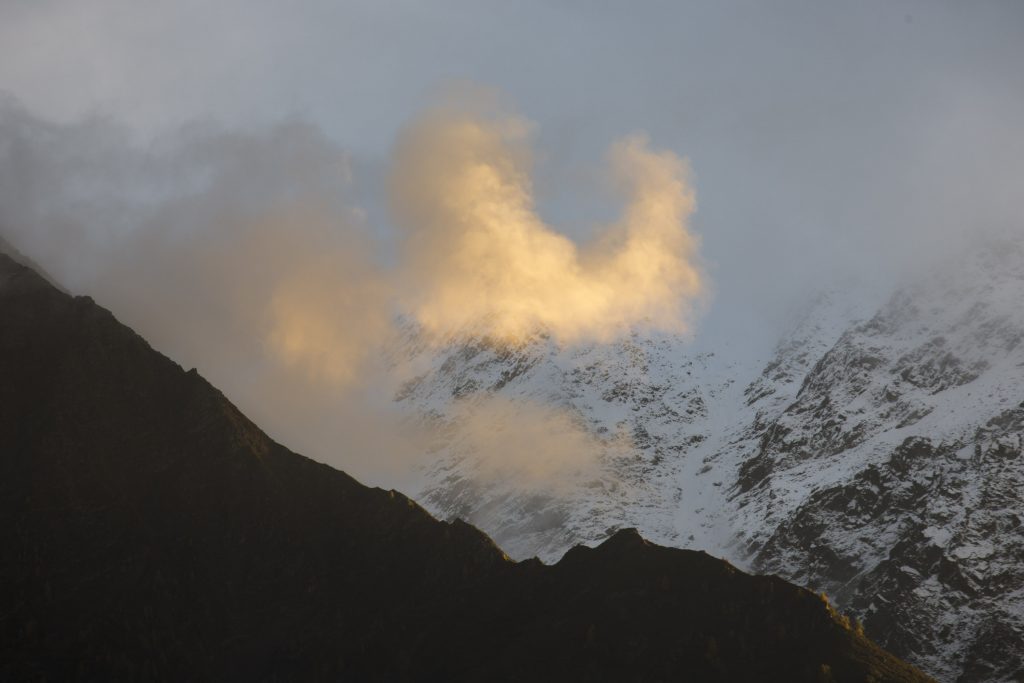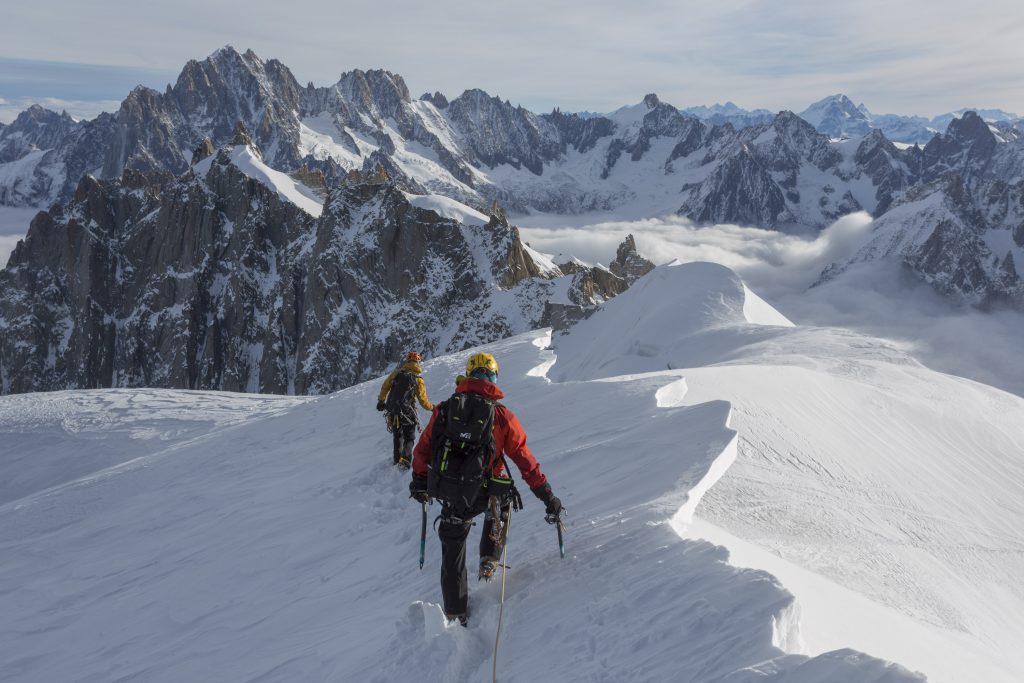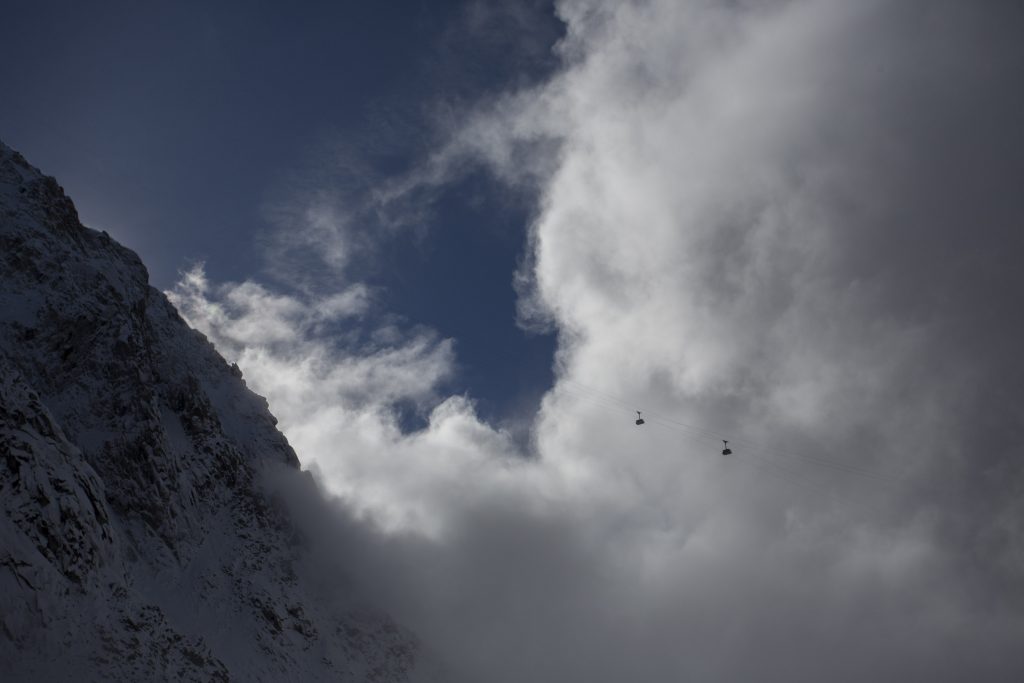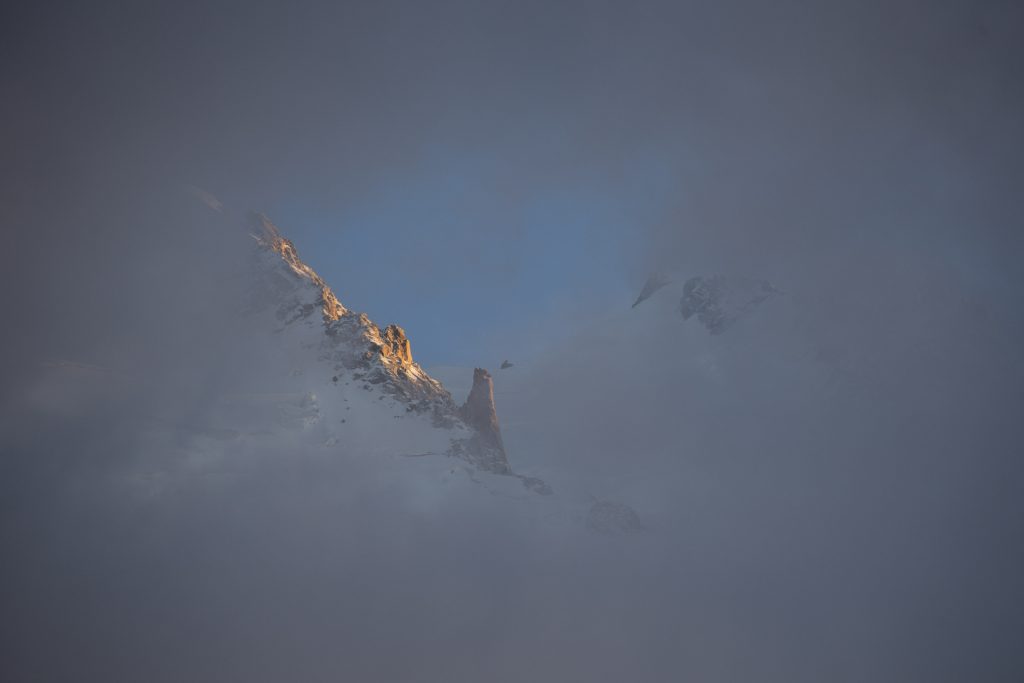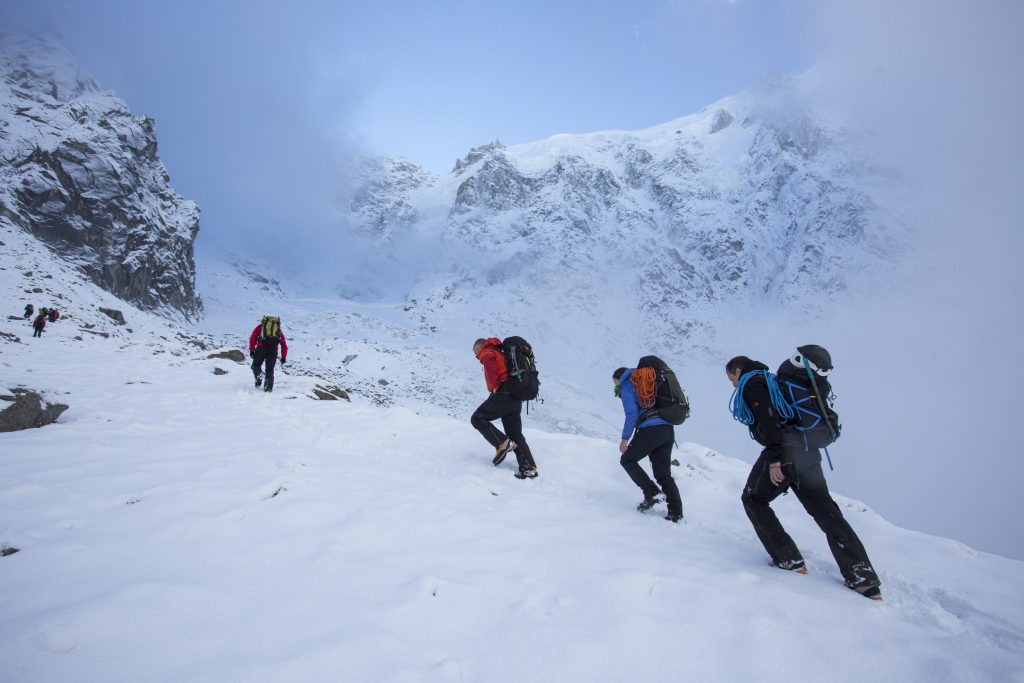In October I spent a few days in Chamonix in the French Alps where I was on a pre-winter training trip with Keswick Mountain Rescue Team. We spent four days practicing rope techniques for rescue, plodding about on snow and ice wearing crampons and climbing icy routes on precipitous ridges and crags. All of this helps familiarise us with winter safety and rescue techniques that may be used when people get into trouble in our local mountains this winter.
• click on an image to get a slide show of photographs •
- Mont Maudit and the Frontier Ridge taken from the Italian side of Mt Blanc. Canon 5D MkIII, Canon EF 17-40mm f/4L USM Lens at 70mm, ISO 100, 1/250 sec at f/10. Handheld. October. © Stuart Holmes
- Moonlit Mt Blanc taken from our chalet, the camera resting on the balcony as I didn’t have a tripod. Canon 5D MkIII, 70-300 at 128mm, ISO 500, 15 sec at f/4.5. © Stuart Holmes
- At the top of the cable car they have constructed a glass box allowing you to stand and have your photo taken out over the void, 1200m below your feet. Canon 5D MkIII, Canon EF 17-40mm f/4L USM Lens, ISO 100, 1/250 sec at f/9. October. Handheld. © Stuart Holmes
- The Dent du Geant taken from the Helbronner Glacier on the Italian side of the Vallee Blanche. Canon 5D MkIII, 24-105 at 32mm, ISO 100, 1/250 sec at f/10. © Stuart Holmes
Chamonix is where I first got serious about photography, around 30 years ago. I spent a lot of time climbing mountains here in the summer holidays whilst a student and used to carry an Olympus OM1N SLR with rolls of Kodak 64 ASA slide film. It was fantastic to be able to show friends and family at home what I had been up to in the mountains and the incredible views and locations we got to. On top of that was the huge pleasure of creating what I considered to be more than just the ‘snaps’ that my friends were coming back with. The main difference was taking a little more time to think about effective composition but also being prepared to make the effort to get the camera out when weather conditions or your own fatigue would have normally prevented it.
- Descending the steep and precipitous snow ridge from the Aiguille du Midi. The strong wind blowing snow around adds to our discomfort but also adds drama to the photo. Canon 5D MkIII, Canon EF 17-40mm f/4L USM Lens at 27mm, ISO 100, 1/800 sec at f/9. Handheld. October. © Stuart Holmes
- The Aiguille Verte at sunset from the valley. Canon 5D MkIII, EF 70-300mm f/4-5.6 IS USM at 146mm, ISO 100, 1/200 sec at f/5.6. Handheld. October. © Stuart Holmes
- The Arete des Cosmiques with climber below one of the rock pinnacles for scale. Mont Blanc behind and the huge Bossons Glacier pouring down towards Chamonix. Canon 5D MkIII, Canon EF 17-40mm f/4L USM Lens at 17mm, ISO 100, 1/250 sec at f/9. Handheld. October. © Stuart Holmes
- Craig protects me as I climb steep snow ice on the Triangle du Tacul. Canon 5D MkIII, Canon EF 24-105mm f/4L IS USM at 24mm, ISO 100, 1/100 sec at f/10. Handheld. October. © Stuart Holmes
It’s not hard to take impressive photographs amongst such incredible scenery. To get something a little different relies on thinking outside the box or having extraordinary conditions. On this last four day trip we had a range of conditions from bluebird to blizzard which was great for photography.
- A stitched panorama of seven vertical shots from the Arete des Cosmiques, Mont Blanc. Canon 5D MkIII, Canon EF 17-40mm f/4L USM Lens, ISO 100, 1/320 sec at f/13. October © Stuart Holmes
- Taken from the valley looking up towards Mont Blanc during the sunset. Canon 5D MkIII, EF 70-300mm f/4-5.6 IS USM at 300mm, ISO 100, 1/60 sec at f/8. Handheld. October. © Stuart Holmes
- Craig climbing on the Pyramid du Tacul, a little whiter than normal as accumulating snow sends spindrift avalanches pouring down our route. Canon 5D MkIII, Canon EF 24-105mm f/4L IS USM at 24mm, ISO 100, 1/200 sec at f/9. Handheld. October. © Stuart Holmes
- Matt and Craig descending towards the Vallee Blanche from the Aiguille du Midi. Canon 5D MkIII, Canon EF 17-40mm f/4L USM Lens at 36mm, ISO 100, 1/320 sec at f/9. Handheld. October. © Stuart Holmes
We mostly used the Aiguille du Midi cable car to get up high. In October it’s about the only lift still open. The top cable car station has been constructed around and within an improbably dramatic spire of orange Mt Blanc granite and has numerous viewing platforms offering truly stupendous high mountain panoramic views. You need to be equipped with crampons, ice axes and ropes and have the necessary experience to go beyond the station. The descent onto the glacier involves climbing down a snow ridge which has eye-watering drops on both sides. The photographic possibilities are amazing but the number one priority obviously is always safety.
- Aiguille du Midi cable cars meet half way up the upper lift section. The top station is 3842m altitude. Canon 5D MkIII, Canon EF 17-40mm f/4L USM Lens at 40mm, ISO 200, 1/4000 sec at f/8. Handheld. October. © Stuart Holmes
- Part of the Aiguille du Midi peeks out from a gap in the cloud at sunset. Taken from the valley bottom. Canon 5D MkIII, Canon EF 70-300mm f/4-5.6 IS USM at 300mm, ISO 100, 1/100 sec at f/5.6. Handheld. October. © Stuart Holmes
- Some of our team members making their way up to the glacier below the Aiguille du Midi for some rope rescue practice. Canon 5D MkIII, Canon EF 17-40mm f/4L USM Lens at 20mm, ISO 200, 1/320 sec at f/8. Handheld. October. © Stuart Holmes
Chamonix offers incredible opportunities for mountain photography in all seasons. There are lots of accessible walks in the summer months from the various ski lifts and mountain huts allowing overnight stays high up. To witness a sunset on the Chamonix Aiguilles reflected in the still waters of Lac Blanc will stay with you forever.
Planning a Trip
Chamonix is about an hour from Geneva airport which is well served by many airlines including Easy Jet. Transfer companies can take you directly and cheaply from the airport to Chamonix:
Accommodation is plentiful from hostels to chalets and very posh hotels. Check out:
Chamonix has its own weather forecast service; very important for those wishing to venture into the mountains:
There are numerous cable cars in the valley leading to different parts of the mountains. In the autumn most of these close as they are primarily used for ski uplift or summer walking. The Aiguille du Midi is open year-round and costs around €50 for a return ticket. It sounds a lot but for where it takes you, it’s worth it.
